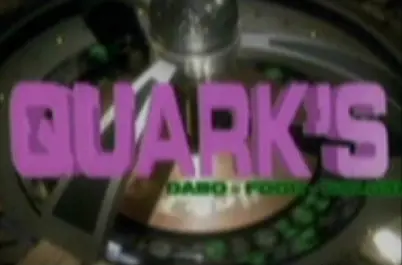I thought the same thing.
data1701d (He/Him)
“Life forms. You precious little lifeforms. You tiny little lifeforms. Where are you?”
- Lt. Cmdr Data, Star Trek: Generations
- 110 Posts
- 868 Comments

 2·2 days ago
2·2 days agoI mostly agree with the idea of using stable distros.
However, I will add that if you hate the default Debian installer and are willing to dig a bit through the website, they do have live USBs for each DE with a Calamares installer that I love. I really wish they would promote those more.
Honestly, they need to redo the whole Debian site.
Also, I find it funny you include 2018 in your range; I think that most things from 2018 could probably run almost any full modern distro competently, and that the better quality devices from 2015-2017 also wouldn’t struggle too much.

 9·2 days ago
9·2 days agoDebian with XFCE. It’s very stable with very little bloat compared to Ubuntu.
KDE might not run horribly, but XFCE was always snappy for me when I ran it on a similarly-aged, sinmilar performance Fujitsu Lifebook.
I’ve never even owned a Mac; I know about it because I’ve Hackintoshed a few times, so I’m familiar with OpenCore.
Really? I thought the last version for those was Monterrey and that that went EOL in 2024.
That reminds me; the other day a client walked up to the help desk I work at with a 2015 MBP still running El Capitan.
I’m confused. How did you save your parent’s Masters in Business Administration? /s
(Sorry. I can’t help but think that every time someone acronym’s Macbook Air.)
OCLP?

 7·3 days ago
7·3 days agoI enjoyed the D & D movie, so maybe they can pull off something good. Maybe they could just do something set in, say, 2467.
However, I’m extremely sad that it probably won’t be Crisis Point 3.

 1·3 days ago
1·3 days agoI will point out that the card support for ROCm has improved; AMD explicitly supports most RDNA3 or later consumer GPUs, and I think support might go back to RDNA2, maybe RDNA1.
Supposedly it’s technically possible to use Polaris, but it’s very broken at this point.

 8·4 days ago
8·4 days agoThe Arch Wiki is probably the sungle most useful documentation for any Linux user; I don’t even use Arch and it’s still extremely helpful.
I could see the benefits of using Arch just so almost every function my system has is near-perfectly documented in Arch Wiki.
As for the distro itself, it has the newest packages, and often good repos with interesting packages that Debian and others may lack. It also expects you to choose and install the components you want, whereas the Debian installer will usually just install defaults; you can use Debootstrap for a minimal Debian install, but that’s not as well supported for installing Debian due to the way tools as set up on the install medium.
The reason I choose Debian over Arch is because if I don’t use a device for several months and have to install updates (like my school laptop over the summer), Debian Stable is more likely to survive that than Arch; I’ve destroyed several Arch VMs by trying to update them after not using them for months. I’m sure I could have salvaged them if I tried, but I’d rather just make a new VM.

 2·6 days ago
2·6 days agoIt looks like NetBSD and OpenBSD might be good OSs for 32-bit; the next FreeBSD version is dropping support. I don’t use any BSDs, but I think a BSD is probably the best-supported modern Unix operating system for this kind of hardware as the last of the major distros drop i386.
Linux distro support is really thinning out for x86_32, so for this use case; I’m sure the distros still exist, but they’re often niche projects. Gentoo may do the trick if you want to; I can’t tell if they compile their newfangled precompiled packages for i386 though, so if they don’t, you’ll probably have to set up a cross compiling setup from a more powerful x86_64 machine, which you’d need to use every time you update.

 1·7 days ago
1·7 days agoI just want a Lower Decks Vol 1 vinyl reissue and a Vol 2.

 1·8 days ago
1·8 days agoWasn’t necessarily suggesting 11 LTSC; just my personal choice.

 3·8 days ago
3·8 days agoNot really.
Ampere’s for servers; if you have the cash to blow, you can get a fancy workstation, but not a laptop. It’s really a shame; I think Ampere might be able to do well in the consumer CPU market if they wanted to face Qualcomm (and assuming they can get their single core performance up). A lot of their hardware seems to follow standards pretty well.
Graviton is only used internally inside Amazon and not sold to customers.
The only semi-decent ARM laptops you can get right now are Snapdragon ones, some of which kind of support Linux but with a lot of caveats and obnoxious quarks.

 1·8 days ago
1·8 days agoI have to have Windows for my university’s test-taking spyware, so I just have a barebones 11 LTSC installed on a secondary drive.

 1·9 days ago
1·9 days agoHeck, if you want the stickers, you can easily print them on a good inkjet.

 12·10 days ago
12·10 days agoI just looked it up, and it seems a lot of the pre-Apple Silicon MacBook had swappable airport cards that used a completely standard mini PCIE slot. From a cursory google search, it looks completely possible to swap in something like an Intel Wi-Fi card that is supported natively by the kernel.
A mini-PCIE Wi-Fi modem can be had for not too expensive, around the $30 range; in fact, if you have a good stack of old Wintel laptops, one of those might have a card that works well. In fact, I did that with my sister‘s laptop (although she was using Windowd) – her Realtek Wi-Fi card was causing endless misery, so I ripped the Intel modem out of an ultra book from circa 2016 and put it in her laptop. No more issues.

 10·10 days ago
10·10 days agoExactly. Luckily, back in high school, my IB History class spent a good couple months just learning about authoritarian rulers and their tactics.
I especially like pulling out Pinochet because he’s a clear and relatively recent example of right wing authoritarianism, manipulation of existing religious structures, and US government support of authoritarian regimes that help contextualize its trend towards authoritarianism.

 12·11 days ago
12·11 days agoI think the biggest issue with ENT is probably the sexualization of T’Pol, the culmination of a nasty habit in Berman Trek.
I could tune out 7’s catsuit because she was otherwise well-written and the good plotlines outnumbered the bad, but it feels like at least 75% of all T’Pol stories were of the horny Berman type, to the detriment of her character.




For reference, sharing your local IP address is a little like saying “I’m in room 223” (local IP address) and not saying what building (network) you’re in. Someone can’t walk into 223 in a different building and get to the same room you’re in.
Honestly, even if someone knew what network you were on, a local IP address wouldn’t be that useful because even if they successfully got on your network, as long as you have a properly-configured firewall and no vulnerable network-exposed services on your system, they can’t really do anything.
Honestly, while it’s still not a bright idea to tempt fate like that, even sharing your public IP isn’t that bad for the same reasons if it’s a competent home user; the worst that can happen on a properly-configured network is that someone tries and fails to exploit vulnerabilities that aren’t there and MAYBE drum up your internet bill. Also, for most ISPs, your public IP changes pretty often anyway, usually something like every few days to a week, due to changing DHCP leases.